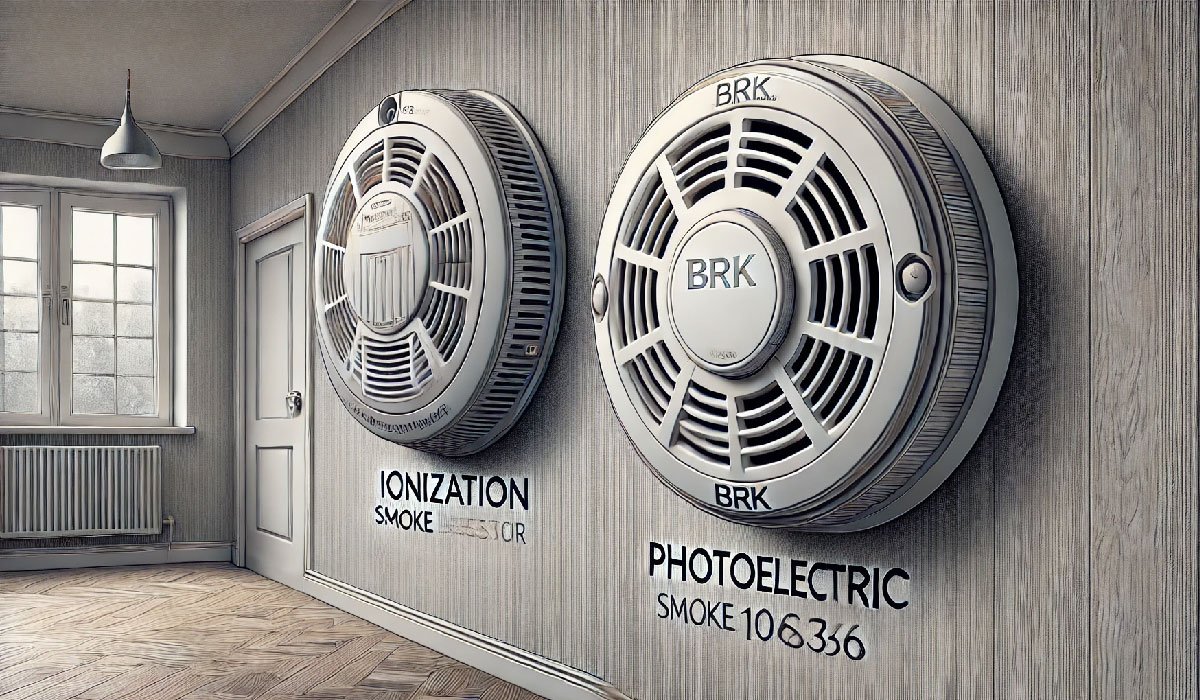When it comes to ensuring the safety of your home or business from fire hazards, choosing the right smoke detector is crucial. This comprehensive guide delves into the details of two popular models from Brk 1046836 or 1046835. We will explore their specifications, key features, and essential differences to help you make an informed decision. This article aims to provide an exhaustive comparison that caters to both residential and commercial needs, ensuring you have all the information necessary to select the best smoke detector for your environment.
Introduction to BRK Smoke Detectors
BRK, known for its robust and reliable safety devices, has been a leading name in fire prevention solutions for decades. Their products are designed with the latest technology to provide maximum protection against the dangers of smoke and fire. This section will provide a brief history of BRK and an overview of the different types of smoke detectors they offer, highlighting their commitment to innovation and quality.
Detailed Specifications of Each Model
BRK 1046835: Ionization Smoke Alarm
The BRK 1046835 utilizes ionization technology, ideal for detecting fast-flaming fires. Here are the key features and specifications:
- Type of Detector: Ionization smoke alarm.
- Power Source: Can be either battery-operated or hardwired with battery backup.
- Design: Compact and easy to install, suitable for ceilings and walls.
- Connectivity: Features optional wireless interconnectivity with other alarms for synchronized alerts.
- Ideal Usage Scenarios: Best used in areas prone to quick-burning fires, such as kitchens or rooms with highly flammable materials.
BRK 1046836: Photoelectric Smoke Alarm
Conversely, the BRK 1046836 is equipped with photoelectric technology, which is more sensitive to smoldering fires. Its specifications include:
- Type of Detector: Photoelectric smoke alarm.
- Power Source: Available in both battery-powered and hardwired versions.
- Design: Similar to the 1046835, with a sleek, low-profile design.
- Connectivity: Capable of interconnecting with other BRK alarms for comprehensive coverage.
- Ideal Usage Scenarios: Particularly effective in bedrooms, living rooms, and hallways where smoldering fires are more likely.
READ ALSO: Henry Keele University of Denver: A Comprehensive Guide
Key Differences Between Brk 1046836 or 1046835
Smoke Detection Technology
The fundamental difference between the two models lies in their smoke detection technologies. The 1046835’s ionization sensor is quicker at detecting rapidly spreading flames, whereas the 1046836’s photoelectric sensor excels at identifying slow-burning, smoldering fires. Understanding these differences is essential for placing the right type of detector in appropriate areas of your property.
Response Time and Sensitivity
Each model’s sensor type not only defines the kind of fires it detects but also influences its response time to various fires. This section compares how each detector responds to different fire types, providing a clearer understanding of where each model performs best.
Recommended Placement
Strategic placement of smoke detectors can significantly enhance their efficacy. This part of the article will offer guidelines on optimal placement for both models to maximize their protective capabilities.
Installation and Maintenance
Proper installation and regular maintenance are vital for ensuring that smoke detectors function correctly and reliably. This section includes detailed instructions on how to install both models, tips for regular maintenance, and common troubleshooting methods.
Performance and Reliability
This section presents a comparative analysis of both models based on real-world applications. Testimonials and case studies highlight each model’s reliability and effectiveness in detecting fires, providing practical insights into their performance.
Additional Features and Advantages
Beyond basic smoke detection, the Brk 1046836 or 1046835 offer additional features that may be crucial for some users. This includes interconnected alarms, which ensure that when one alarm goes off, all connected alarms do too, providing quicker and more effective alerts throughout the property.
Cost Comparison and Value for Money
Comparing the costs of these models and analyzing their long-term value involves examining their prices, the longevity of the detectors, and the potential cost savings due to early fire detection. This section helps you assess which model gives you more bang for your buck.
Pros and Cons
A straightforward list of each model’s advantages and disadvantages will help summarize the critical points discussed and assist in making a balanced decision based on your specific needs.
Buyer’s Guide
Considerations such as the size of your home, family needs, and budget are crucial when purchasing a smoke detector. This buyer’s guide will offer tailored recommendations based on various user scenarios, helping you choose the model that best fits your requirements.
Regulatory Compliance and Safety Standards
Both models comply with national and international safety standards, which is a testament to their reliability and effectiveness. This section details the compliance and standards that each model meets, underscoring the importance of choosing detectors that are not only effective but also legally compliant.
Conclusion
By comparing the Brk 1046836 or 1046835, this article has outlined the primary considerations you need to make when selecting a smoke detector. Each model has its strengths and is suited to different environments and fire types. Whether you opt for the ionization-based 1046835 or the photoelectric 1046836, both models uphold BRK’s commitment to safety and reliability. Make an informed choice to protect your home or business from the devastating effects of fire.
FAQs About Brk 1046836 or 1046835
1. What is the main difference between the Brk 1046836 or 1046835 models?
The primary difference lies in their detection technology. The BRK 1046835 uses an ionization sensor that is more sensitive to fast-flaming fires, which typically produce less smoke but more flames. On the other hand, the BRK 1046836 employs a photoelectric sensor that is better at detecting smoldering fires, which are slower burning and produce more smoke.
2. Can the Brk 1046836 or 1046835 be interconnected with other smoke alarms?
Yes, both models can be interconnected with compatible BRK and First Alert branded smoke, CO, and combination alarms. This interconnectivity allows all connected alarms to sound simultaneously, providing a comprehensive alert system throughout the property.
3. Are these models battery-operated or hardwired?
Both the Brk 1046836 or 1046835 are available in battery-operated and hardwired versions. The hardwired versions also include a battery backup to ensure functionality during a power outage.
4. Where should I install the Brk 1046836 or 1046835 smoke detectors in my home?
The BRK 1046835, being more sensitive to fast-flaming fires, is best installed near kitchens or garages where such fires are more likely. The BRK 1046836 is suited for bedrooms, living rooms, and hallways where smoldering fires can occur, especially near fabrics and electrical devices that might overheat.
5. How often should I replace the batteries in these smoke detectors?
It is recommended to replace the batteries in your smoke detectors at least once a year, or as soon as the low battery warning begins to chirp. Regular testing and maintenance are advised to ensure they are always in working order.
6. What are the warranty terms for the Brk 1046836 or 1046835?
Both models typically come with a 10-year limited warranty that covers defects in materials and workmanship. Be sure to check the specific warranty details in the user manual or the manufacturer’s website for precise information.
7. How do I test and maintain these smoke detectors?
To test the smoke detectors, press the test button located on the surface of the unit. You should hear a loud, audible alarm if the unit is functioning correctly. For maintenance, it is recommended to clean the smoke detectors regularly by vacuuming over and around the smoke alarm’s cover.
8. Can the Brk 1046836 or 1046835 detect carbon monoxide?
No, neither the Brk 1046836 or 1046835 is designed to detect carbon monoxide. They are dedicated smoke detectors. For carbon monoxide detection, you will need to install separate carbon monoxide detectors or a combination smoke and carbon monoxide alarm.





